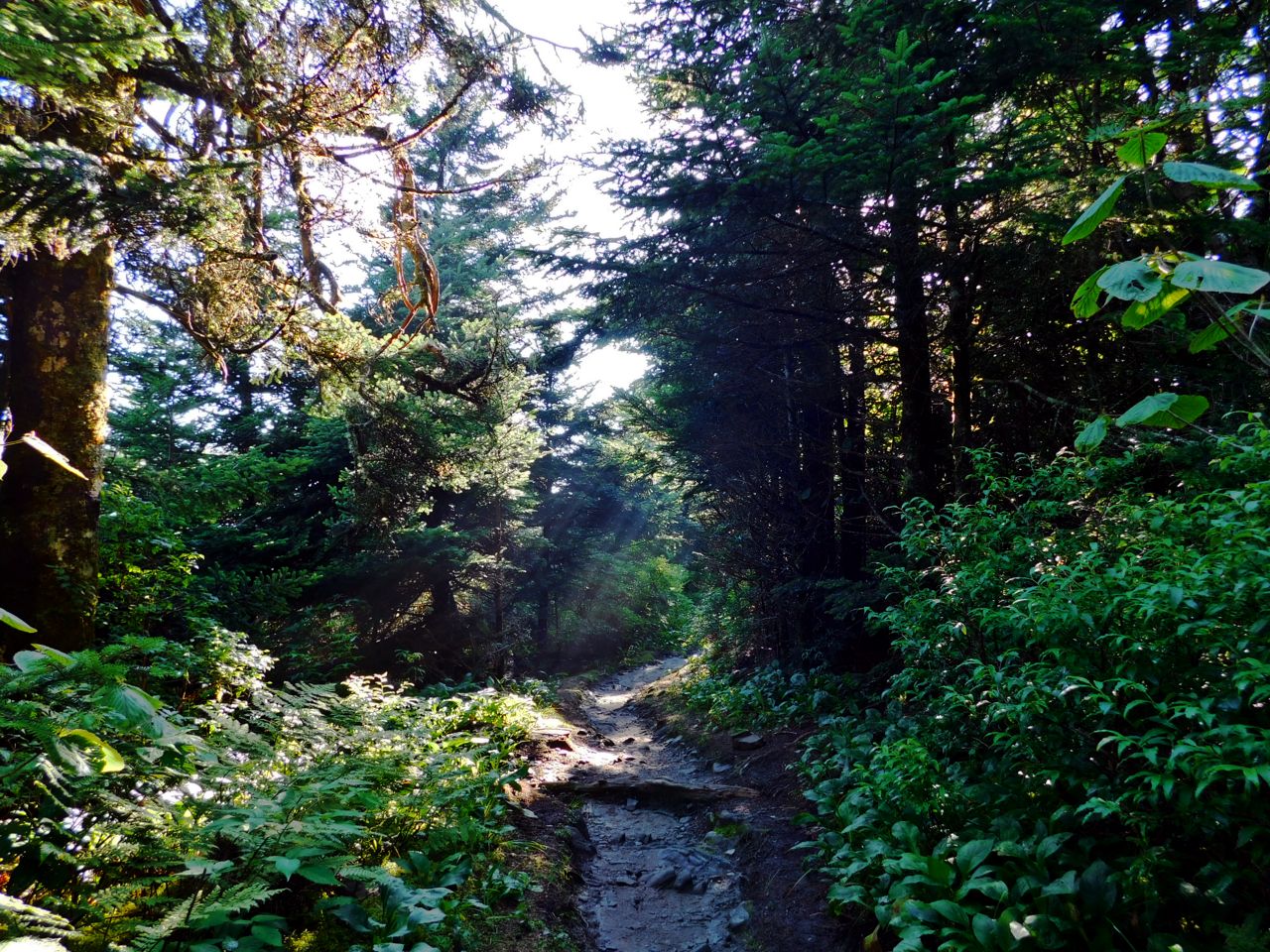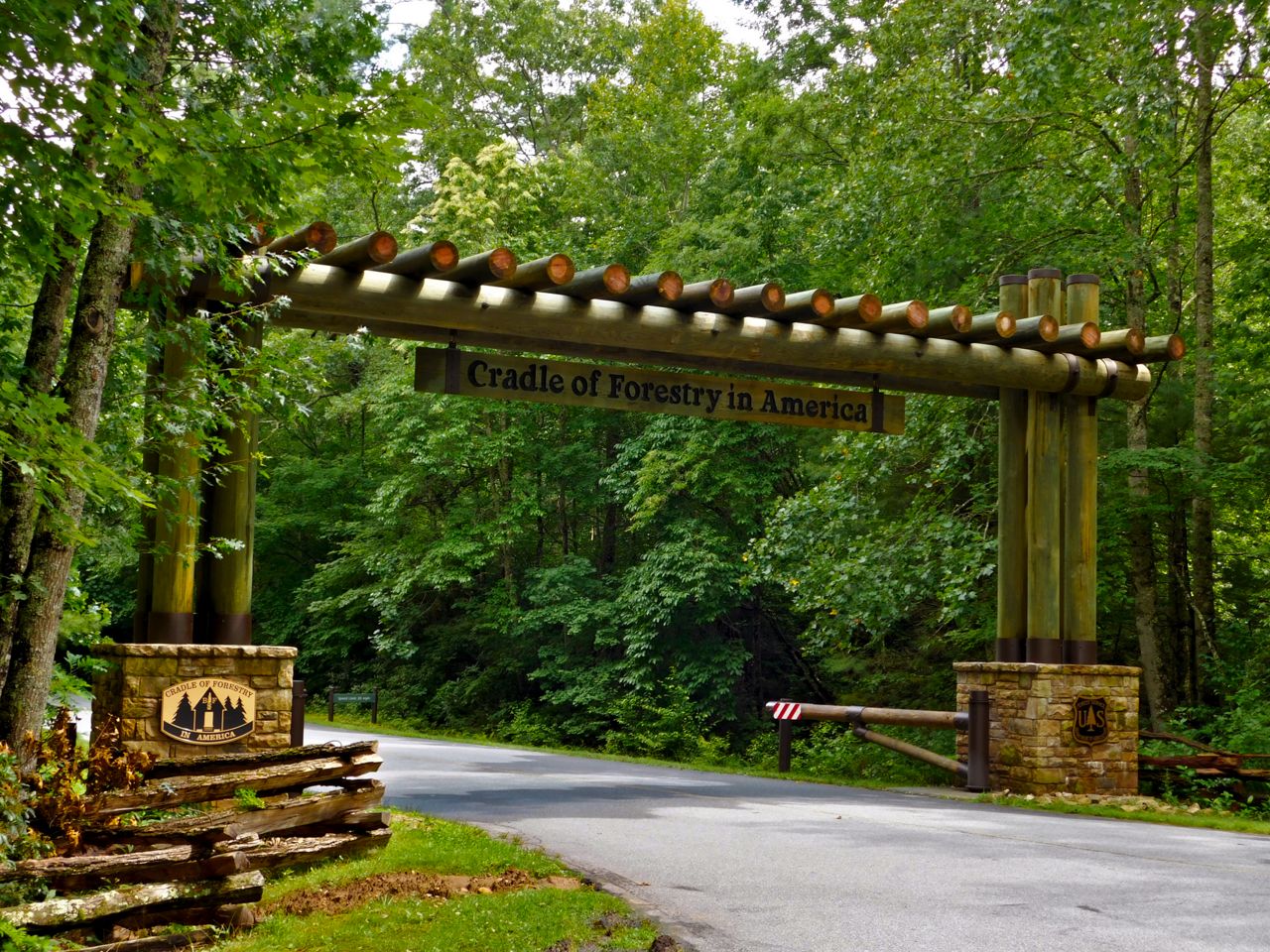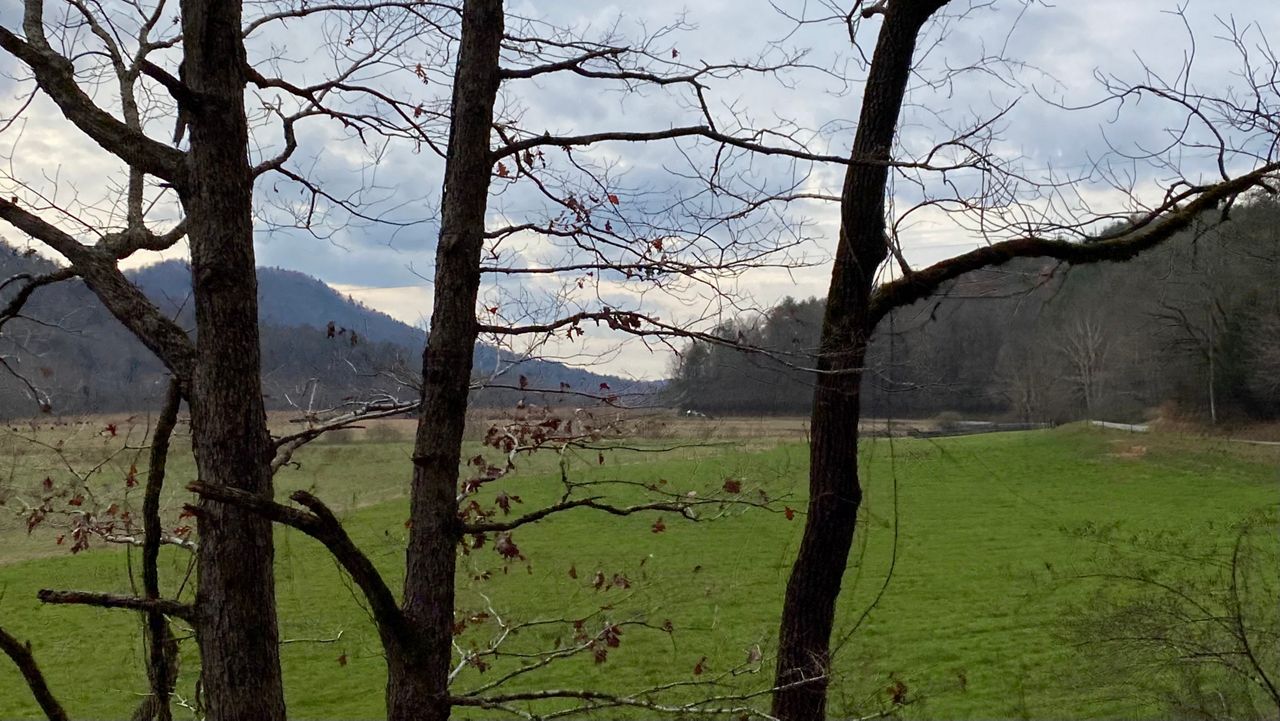A new plan for the national forests in the North Carolina mountains includes a sharp increase in logging, including in old-growth areas, but also new protections for some parts of the forests.
It took more than 10 years, but the National Forest Service finally finished the Nantahala-Pisgah Forest Plan, meant to guide how the forests are managed for decades to come.
Environmental groups are not happy with the plan for the forests, which cover more than a million acres in western North Carolina.
“The Forest Service flat-out refused to listen to the public and consider easy, win-win solutions that were widely supported,” said Will Harlan, with the Center for Biological Diversity. “Instead, it’s pursuing its own hyper-aggressive logging agenda that sentences the forest to decades of conflict, litigation and community resistance.”
The land management plan for Pisgah and Nantahala National Forests is meant to guide how the forest is used and managed for the next 30 years. The 361-page document details plans and goals for the forest, including logging, trail maintenance, protecting archeological sites, improving water quality and protecting against the impacts from climate change.

“The forest plan is a framework to address incredibly complex challenges like climate change and invasive species, impacts from development on adjacent private lands and high levels of visitor use,” James Melonas, supervisor of the National Forests in North Carolina, said in a news release.
“Ensuring our forest ecosystems are healthy and resilient is critical to long-term sustainability of all the habitats and ecosystem benefits on which we all depend.”
The National Forests in western North Carolina are some of the most visited in the country, according to the National Forest Service.
Federal law says national forest management plans are supposed to be updated every 10 to 15 years. The plan for Nantahala and Pisgah, originally published in 1987, has not been updated since 1994.
There were more than 36,000 comments submitted to the Forest Service about the plan, a record for the agency. When the draft came out, people submitted more than 14,000 objections, setting another record, according to the Forest Service. Many of those objections had to do with increasing logging in the forests, especially in old growth areas.
Under the old plan, the Forest Service allowed up to 650 acres of logging per year. The new plan sets a short-term goal to almost double that with up to 1,200 acres each year. The long-term plan is to log 3,200 acres each year.
The plan opens up about half of the forests to logging, including areas with old growth trees, according to environmental groups opposed to the plan.
“Our current forests are what grew up after extreme logging practices more than 100 years ago, before these lands were national forests. The trees are now mostly the same age and size,” said Michelle Aldridge, who led the planning team for the Forest Service.
“We need more young and open forest for wildlife species including bats, ruffed grouse, pollinators, and rare species, such as the golden-winged warbler,” she said.
Environmental groups that have been working with the Forest Service on the plan say there are better solutions than allowing logging in old growth areas. They also say the plan would allow logging along trails like the Appalachian Trail and the Mountains-to-Sea Trail and other popular spots for recreation like Craggy Gardens, just north of Asheville.
“The Forest Service had a once-in-a-generation opportunity to map out a better future for these two incredible forests, but this Forest Plan is instead a step backwards,” said Sam Evans, with the Southern Environmental Law Center.
“The plan not only dramatically expands where and how much logging will happen, but it puts the wildlife habitats, backcountry areas, and old growth areas that make the Nantahala and Pisgah National Forests special on the chopping block,” Evans said in a statement.
According to the Center for Biological Diversity, the plan would allow logging in 44,000 acres of old-growth forest. It would also allow logging companies to build new roads into remote areas and harvest trees from steep slopes, which could harm streams and rivers.
“The Nantahala and Pisgah Forests represent the gold standard of National Forests for key priority conservation lands, old-growth and mature forest, wildlife habitat, biodiversity, and clean drinking water,” said Hugh Irwin, with The Wilderness Society.
“This Forest Plan will put key conservation areas and values at risk at a time when we need to act swiftly to mitigate the worst impacts of the climate crisis for communities across the Appalachian Mountains,” he said.
The plan allows logging in half of the 1 million acres that make up Pisgah and Nantahala.

“The plan places 44,000 of acres of old-growth forests in highest priority logging designations,” according to the Center for Biological Diversity. “More than 65,000 acres of North Carolina’s Natural Heritage Areas are in the highest priority logging designations.”
The Forest Service plan also allows logging in popular trail corridors, including along the Appalachian Trail, National Historic Trail of Tears and the Mountains to Sea Trail, the center said in a “report card” analyzing the plan.
Logging operations would also require cutting new roads to remote parts of the forests.
“The plan authorizes more than 300 miles of logging roads, which will cause increased water pollution, pesticide runoff, invasive species, and habitat fragmentation,” the center said.
The center said the plan allows for logging in rare and biologically diverse ecosystems like spruce-fir forests and high-elevation northern hardwood forests.
“The plan fails to consider the national forest in the context of the broader landscape, as required by new rules. Logging is abundant and accelerating on private lands, but national forests are the most important refuges of rare species and old growth forests,” according to the center.
“Forestlands across the Southern Appalachians are experiencing increased threats from fire, insect and plant invasive species, disease, extreme weather, and drought. Scientists project increases in temperature and changes in rainfall patterns that can make these threats occur more often, with more intensity, or for longer durations,” the plan states.
“The new plan focuses on forest resilience in the face of climate change to ensure the Forest Service can sustain these forests for current and future generations,” the Forest Service said in a statement.
The plan has seven main goals for dealing with the impacts of climate change:
- “Where there are species at risk that are susceptible to the effects of climate change, promote activities that support suitable habitat enhancement.
- “Consider and address future climate and potential species range shifts when planning restoration projects, facilitating species migration and adaptation when possible.
- “Monitor for new invasive species moving into areas where they were traditionally not found, especially in high-elevation communities. Utilize the monitoring information to assess threats and prioritize treating highly invasive infestations.
- “Restore native vegetation in streamside zones to help moderate changes in water temperature and stream flow and enhance habitat.
- “Anticipate and plan for changes in natural disturbance patterns.
- “Prepare for intense storms and fluctuations in base flow using methods that maintain forest health and diversity, including controlling soil erosion, relocating high risk roads and trails,and constructing appropriately sized culverts and stream crossings while retaining stream connectivity.
- “To maintain genetic resiliency, consider locally adapted genotypes for use in restoration projects.”
The forest itself has a role to play in helping slow climate change, serving as a carbon sink, according to the Forest Service. “They contain approximately 73 million metric tonnes of carbon,” the plan states, and that number is increasing.
Environmental groups said the logging plan could destroy areas that help store carbon.

The plan “ignores the role of these forests – and their ability to store massive amounts of carbon – in the fight against climate change,” according to the Southern Environmental Law Center. “The limited remaining old-growth areas in the Nantahala and Pisgah National Forests are particularly vital to fighting climate change and preserving biodiversity.”
“The plan recommends 49,000 acres for newly recommended wilderness, in addition to the 66,000 acres of designated wilderness already found in the forest,” according to the Forest Service.
The new wilderness area recommendations include more than 3,000 acres of Craggy Gardens, just north of Asheville, and more than 6,300 acres of Bald Mountains along the border with Tennessee west of Boone.
“The plan also recommends nine newly eligible wild and scenic rivers, in addition to the ten currently eligible, and three existing. Wild and scenic rivers are maintained for their free-flowing nature and outstanding, remarkable values,” the Forest Service said in a news release.
The rivers now eligible for the congressional designation include sections of the Davidson, French Broad, Nantahala and Linville rivers.
The plan also adds to the forests’ network of old-growth areas, according to the Forest Service.
“It increases the designated old growth network to about 25% of the forest where the Forest Service will work to ensure the development of old growth characteristics. In addition to the 265,000-acre designated old growth network, hundreds of thousands of acres of forest outside the network will continue to age and progress to old growth conditions over time,” the Forest Service said.
But, the Southern Environmental Law Center said, the plan “fails to protect more than 100,000 acres of old-growth forests, habitat for rare species, and roadless backcountry.”



